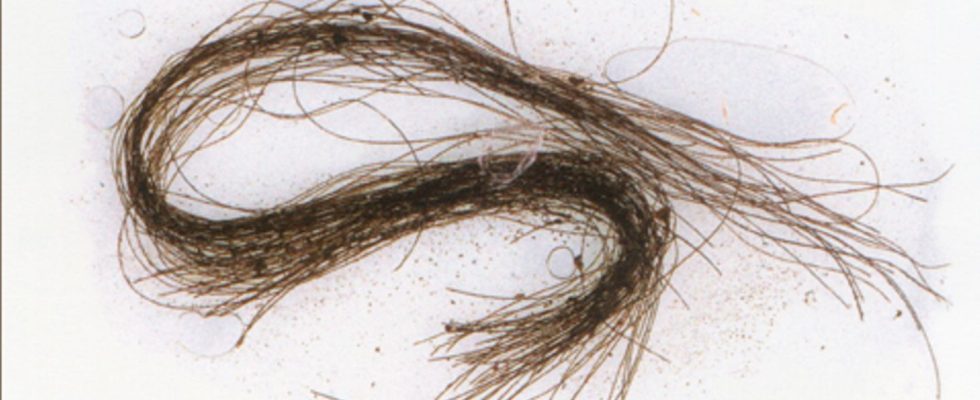Menorca
Hair sample from the Bronze Age found: People were already consuming drugs 3000 years ago
The hair sample found in the cave. Traces of drugs were found in it.
© University Autònoma de Barcelona
Mind-expanding remedies already existed 3000 years ago. For the first time, scientists have directly demonstrated that people used drugs in ancient times.
A few strands of red hair brought the proof: people were already consuming drugs 3000 years ago. Archaeologists had found them in Spain in an old burial ground. The hair test that was carried out was ultimately positive: The researchers found alkaloids that indicate nightshade plants.
The substances found include atropine, scopolamine and ephedrine, writes the team led by Elisa Guerra-Doce from the University Autónoma de Barcelona in an article published in the scientific journal “Scientific Reports”. They trigger hallucinations and delirium and have a stimulating effect. The research team claims to have proved for the first time that drug use already took place in ancient times. So far, only indirect evidence has been available.
Plants found on the island were probably consumed as drugs
The strands of hair were discovered in the 1990s in a chamber in the Es Càrritx cave on the Spanish island of Menorca. There the dead were buried, their hair kept in a container made of horn and wood. New investigations using high-performance liquid chromatography and high-resolution mass spectroscopy revealed that the red-dyed strands of hair are 3,000 years old, i.e. from the Bronze Age. Apparently, mind-expanding substances were already being consumed back then.
addictive
From horror trips and alcohol escapades: You must know these five books about drugs
However, Elisa Guerra-Doce’s research team is unable to say exactly which drugs were involved. It would be obvious that plants such as mandrake, henbane or thorn apple, which all occur on the island and contain the substances found, were used for this purpose. The researchers suspect that the drugs were consumed in rituals.
Sources: “Scientific Reports” / Autonomous University of Barcelona / “National Geographic”


